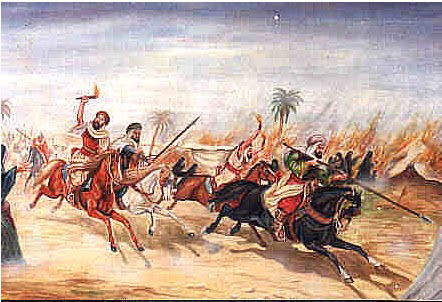GHAZNI’S Attack On Mathura lasted 20 days!


It was easy for Mahmoud to attack into the heart of India. Thus, in December of 1018, Mahmoud crossed the Yamuna River and collected 1,000,000 dirhams from Baran (Bulandshahar), and then marched into Mathura district, first into Mahaban.
Utbi describes that many men tried to flee the fort and cross the foaming river, but many were drowned, slain, or captured. Almost 50,000 men were killed.
Then Mahmoud directly attacked Mathura, the town sacred for Lord Krishna. He was quite impressed by the main Keshava Rai temple, the temple that marks the birth site of Lord Krishna, thinking that it must have taken 200 years to build. Nonetheless, he burned the huge temple to the ground. The pillage of the city went on for 20 days, in which Mahmoud gave instruction to destroy all of the temples.
There he took 5 golden deities and 200 silver deities, leaving the city in ruins. From there he went on to Kanauj, which had been the center of several dynasties of Hindus, which is also described in the Kitabu’l-Yamini of Utbi.
Therein it explains the antiquity of the temples, in which it says: “In Kanauj there were nearly 10,000 temples, which the idolaters falsely and absurdly represented to have been founded by their ancestors two or three hundred thousand years ago…” Of course, the Muslim invaders could not understand such a span of time and continued with the destruction of all things non Muslim.
Seeing the destruction of so many temples and deities, many citizens fled, and those who did not were butchered. Th e soldiers were given free reign to plunder and take captives in whatever way they liked. Munj was the next city to be attacked, where the Brahmanas fought to the last man, only after they had thrown their children and wives into the fire to prevent them from being taken as slaves, which would have been worse than death.
The next town was Asi, where the ruler fled, and Mahmoud ordered the 5 forts to be demolished with the residents buried in the rubble, and all soldiers killed or captured. The city of Shrawa was the next to be attacked, where only after three days of slaughtering the infidels did the soldiers take time to search the bodies of the dead for any valuables, which amounted to huge amounts of gold, silver, rubies, and pearls.
From this campaign he returned to Ghazni with 53,000 slaves, so many that it is written how the countries of Mawaraun-Nahr, Iraq, and Khurasan were filled with them in a
common slavery of fair and dark, rich and poor.
Source : Stephen Knapp – Crimes Against India
Picture credit : Jagran Josh
DISCLAIMER: The author is solely responsible for the views expressed in this article. The author carries the responsibility for citing and/or licensing of images utilized within the text.
